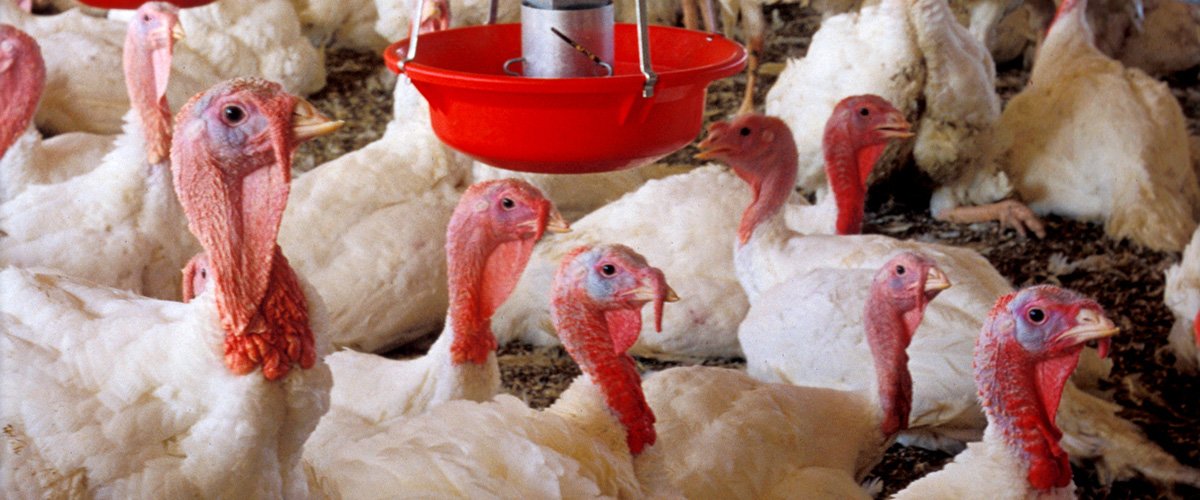The Turkey Disease and Disease Prevention Grant Program supports research on avian influenza, salmonella, and other turkey-related diseases and disease prevention measures.
This grant funding is provided by the Minnesota legislature. Since the program’s inception, research has increased understanding of how avian influenza spreads, improved virus prevention and control measures, and developed new biosecurity and emergency response strategies.
This grant program was formerly known as the Avian Influenza Grant Program. The name was changed the Turkey Disease and Disease Prevention Grant Program in 2023 to better reflect the intent of the funds to support research related a range of poultry diseases.
Turkey Disease and Disease Prevention Grants
2023 Minnesota Turkey Disease & Disease Prevention Grants
| Project Title | Principal Investigator |
| Defining the Environmental and Physiological Contributors to the Onset of Periocular Inflammatory Disease in Turkey Breeder Hens | Kahina Boukherroub, College of Food, Agricultural and Natural Resource Sciences (CFANS) Department of Animal Science |
| The Evolution of Influenza A Viruses in Immunosuppressed Poultry | Marie Culhane, College of Veterinary Medicine (CVM) Department of Veterinary Population Medicine |
| Feed Additives to Combat Turkey Arthritis Reovirus | Sagar Goyal, College of Veterinary Medicine (CVM) Department of Veterinary Population Medicine |
| mRNA Vaccines to Combat Turkey Arthritis Reovirus | Sagar Goyal, College of Veterinary Medicine (CVM) Department of Veterinary Population Medicine |
| Avirulent Salmonella Phyto-Nanocapsules (aSpn): Customizable Multi-serotype Autogenous Vaccines for In-ovo and Flock Applications in Turkey Production to Prevent Transfer of Salmonella to Ground Turkey | Anup Johny, College of Food, Agricultural and Natural Resource Sciences (CFANS) Department of Animal Science |
2021 Response to Avian Influenza Grants
| Project Title | Principal Investigator |
|---|---|
| Safe Evaluation of HPAI Airborne Transmission Risk from Surfaces | Jiayu Li |
| Exploring the Cellular and Molecular Determinants of Susceptibility of Minnesota’s Turkeys to Avian Influenza Virus | Hin Ly |
| Response of the Reproductive Tract to Avian Influenza Virus Infection, In Vivo and In Vitro | Kahina Ghanem |
| Intervention Strategies to Combat Avian Influenza | Sagar Goyal |
| Using Transmission Dynamics to Right-Size Outbreak Response to Low Pathogenicity Avian Influenza | Amos Ssematimba |
| Immunological Response in Turkey Breeder Hens to an Influenza DNA Vaccine | Zheng Zing |
2019 Response to Avian Influenza Grants
| Project Title | Principal Investigator |
| Evaluating biosecure entry protocols and educational methods for entry of naïve and experienced persons to a poultry facility | Erin Cortus |
| Using viral interference to limit the spread of avian influenza virus on infected poultry premises | Carol Cardona |
| Effective process and system for inactivation of avian influenza viruses | Roger Ruan |
| What is causing avian influenza? Quantifying the relation between disease outbreaks in Eastern Asia, the patterns of migratory bird movements, and the risk for disease occurrence in Minnesota | Andres Perez |
| System biosecurity strategies to prevent the spread of avian influenza outbreaks | Cesar Corzo |
| Capturing movements of avian influenza vius from wild birds to domestic poultry in Minnesota | Marie Culhane |
| Risk assessment of mortality disposal strategies in an avian influenza outbreak | Carol Cardona |
2017 Response to Avian Influenza Grants
| Project Title | Principal Investigator |
| Simulation‐Based Demonstration and Education of Pathogen Transmission Risk Around Farms and Operations | Erin Cortus |
| Minimizing avian influenza introductions by changing litter management practices | Sally Noll |
| All Hands on Deck! Preparing for the next Avian Influenza Agricultural Emergency in Minnesota | Katey Pelican |
| Novel Microwave Inactivation of Avian Influenza Viruses | Roger Ruan |
| Exploring the viral composition of influenza in swine to determine if swine have a role in the transmission of avian influenza in Minnesota | Montse Torremorell |
| Defining the role gull species play in the disease ecology of avian influenza in Minnesota | Marie Culhane |
2015 Response to Avian Influenza Grants
| Project Title | Principal Investigator |
| Exploring between and within region spread of Highly Pathogenic Avian Influenza (HPAI) | Sasi Malladi |
| Live bird marketing in MN and influenza infection status | Carol Cardona |
| Investigation of Minnesota backyard flocks in highly pathogenic avian influenza control zones and outreach to owners | Larissa Minicucci |
| Age susceptibility to infection with HPAIV | Carol Cardona |
| Surveillance, biosecurity and vaccination for Minnesota zoos | Ava M Trent |
| Developing and implementing a plan for MN poultry fairs, shows and swap meets | Wayne Martin |
| Improving host resistance with vaccines | Zheng Xing |
| Slotted floors for turkey barns | Kevin Janni |
| Creating a new structural biosecurity and operational biosecurity paradigm | Sally Noll |
| Vegetative windbreaks for poultry farms | Gary Wyatt |
| The economic recovery of the turkey industry in Minnesota and the United States after the 2015 avian influenza outbreak | Metin Cakir |
